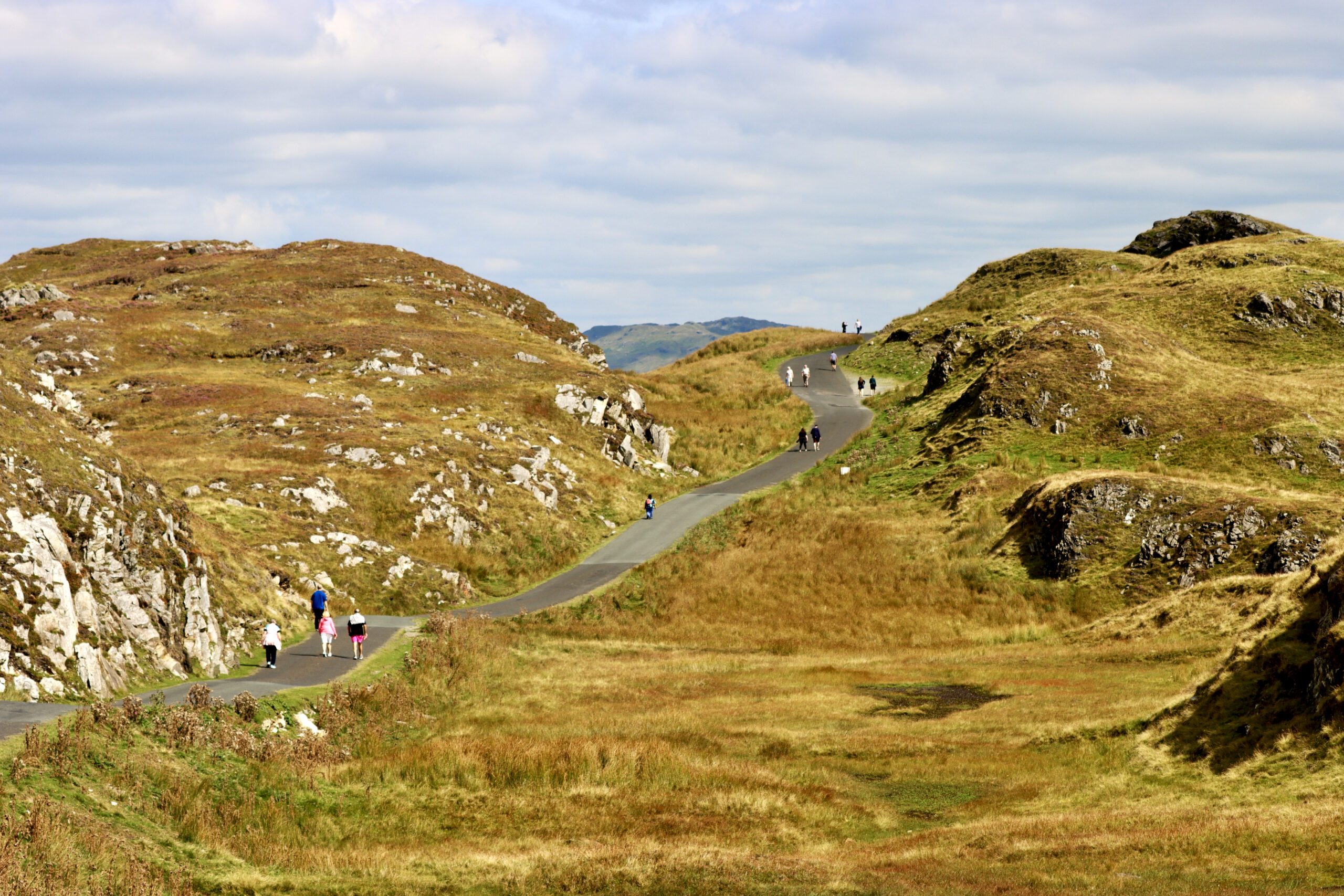
Protecting Ireland’s Blanket Bogs
By Dr Margaret Flaherty and Dr Gary Goggins
Sign up for our monthly newsletter!
Why it’s important to protect bogs?
T o understand why bogs are important, it is best to first understand what they are. Bogs are types of peatlands; terrestrial wetland ecosystems where waterlogged conditions inhibit full decomposition of plant material. The semi-decayed material is compressed forming carbon rich peat. For a healthy bog the water table should be no more than 30cm below the surface. Maintaining this hydrology allows for the bog to remain ‘active’, meaning is can support peat forming vegetation. However, peat accumulation is a very slow process, with growth rates ranging from 0.2 to 2mm per year! There are different types of bogs in Ireland including blanket bogs, raised bogs and fens. Originally covering an area of approximately 7,750 km2 (775,000 hectares or 1,915,067 acres), blanket bogs are the most extensive of Ireland’s peatlands. This area accounts for 8% of the world’s blanket bogs.
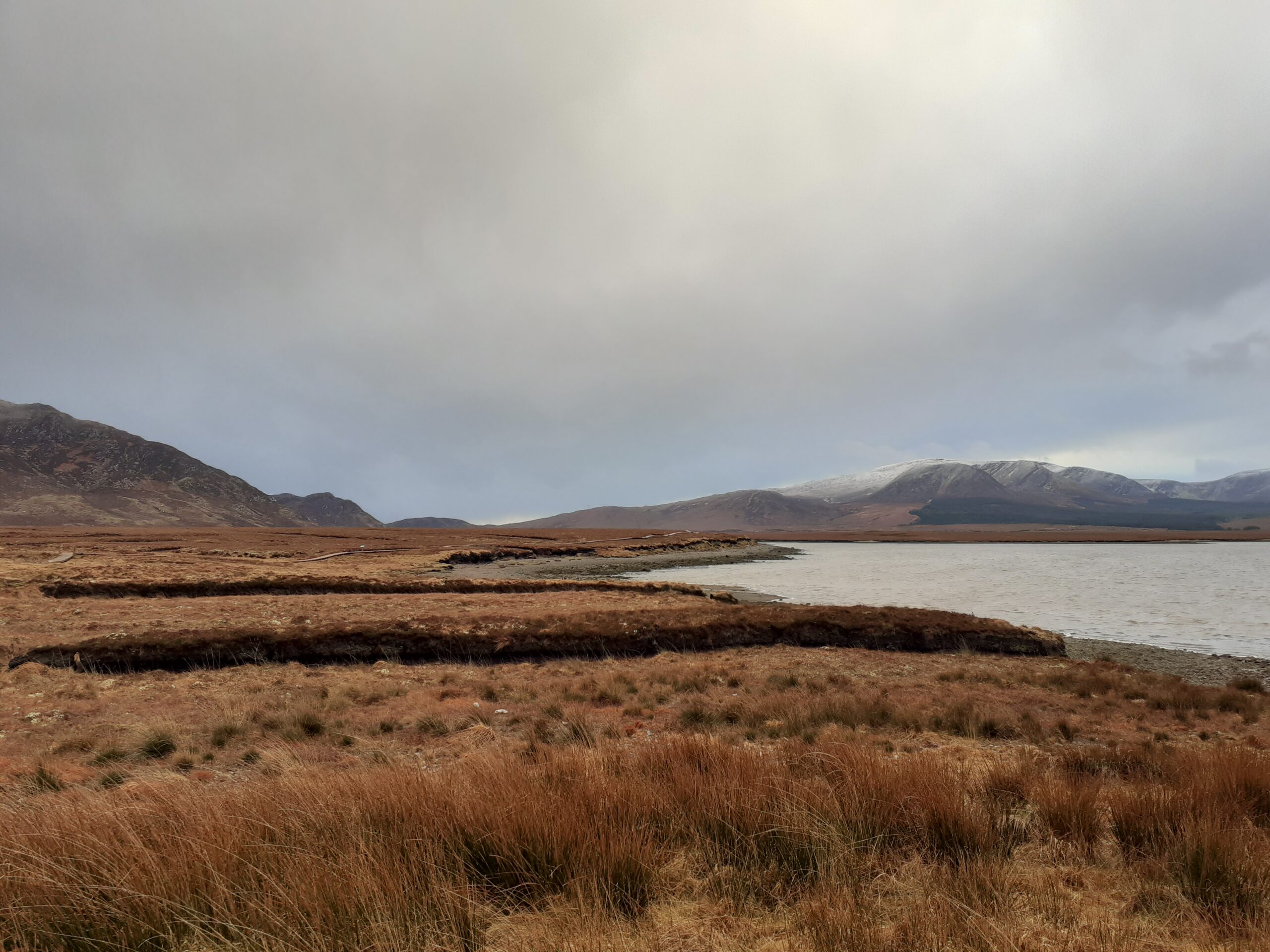
Historically bogs were often viewed as wastelands, leading to their exploitation for fuel, land reclamation, and as dumping grounds. Farmers drained bogs to expand agricultural land or planted trees, which altered the natural hydrology. However, as awareness of the ecological importance of bogs has grown, conservation efforts have increased. Projects like LIFE IP Wild Atlantic Nature1 work with farmers and communities to restore and protect these landscapes for future generations. Bogs are vital for social, economic, environmental, and cultural reasons. They play key roles in carbon storage, water regulation, biodiversity conservation, and local livelihoods.
Carbon
Peatlands act as long-term carbon sinks, capturing and storing atmospheric carbon. An undisturbed peatland stores approximately 0.5 tonnes of carbon per hectare annually, and a two-meter deep bog can hold up to 8,000 tonnes per hectare. Irish peatlands as a whole, store an estimated 1,085 Mt of carbon, over half of Ireland’s total soil carbon despite covering just 16% of the country’s land area. However, when bogs are damaged, they shift from being carbon sinks to carbon sources, releasing greenhouse gases that contribute to climate change.
Biodiversity
Globally blanket bogs are not common and may appear barren at first glance, they provide a habitat for a range of rare, threatened and in a lot of cases declining species of plants and animals. Species are often specialised having adapted to harsh and nutrient-poor conditions. Sphagnum moss, a key bog species, acts like a sponge retaining water and maintaining wet conditions. Carnivorous plants like sundews and butterworts thrive in nutrient-poor soils by capturing insects. Blanket bogs also support rare birds such as the red grouse and golden plover, as well as invertebrates and amphibians that depend on these habitats for their survival.
Water
Bogs play an important role in regulating water flow, by slowing water runoff within river catchments making the surrounding areas and environment more resilient to floods. They can also be a source of high quality drinking water; filtering water, improving its quality by trapping sediments and pollutants. Many Irish drinking water sources originate in peatland catchments, highlighting the importance of bog conservation for securing drinking water supplies.
Economic and cultural significance
Our reliance on blanket bogs extends to supporting rural communities through incomes from agriculture, tourism and recreation. Blanket bogs and associated peatland habitats cover many of the Irish uplands and when managed sustainably can be important for livestock, commonly used as rough grazing for cattle and sheep. Careful management of livestock ensures that grazing levels do not cause excessive damage; overgrazing leads to erosion, while undergrazing can increase the risk of wildfires due to the accumulation of dry vegetation. While being relatively ubiquitous in Ireland, internationally blanket bogs are novel, viewed as landscapes with much beauty and intrigue. Annually, thousands of international visitors visit, learn about and explore blanket bogs in several of Ireland’s National Parks such as Connemara, Wild Nephin, and Glenveagh, making them an important asset for tourism and marketing Ireland as a unique tourism destination.
Beyond their economic value, people have deep cultural connections with bogs. They feature prominently in Irish literature, art and music. Wild Atlantic Nature has created some opportunities to strengthen these links through events such as Tae in the Bog. In collaboration with the LEVERS project2 from Trinity College Dublin, musicians, farmers and local residents were brought together on the bog to learn about ecology and play/listen music, reflecting on the connections between people and place through traditional tunes such as Geese in the Bog. Many overwintering migrant birds to Ireland utilise bogs as important feeding grounds including the Greenland White-fronted Goose, one of Europe’s rarest geese species. Traditionally the species was known as the ‘bog goose’ as bogs were once their main feeding grounds, where they consume the nutritious roots of bog plants such as white-beaked sedge and bog cotton. The appreciation of these unique habitats, the species they support and the connectedness with local communities is epitomised in such tunes.
Mapping the past and shaping the future
Blanket bogs are natural time capsules, preserving layers of pollen, plant material, and even ancient artefacts within their depths. Scientists analyse peat cores to reconstruct past climates, vegetation changes, and pollution levels. Archaeological finds, such as the world’s oldest known field systems at the 6,000-year-old Céide Fields3 in north Mayo, demonstrate how bogs provide a window into the past, revealing insights into ancient human activity and environmental changes over millennia. The remnants of ancient pine trees at the location that is now the edge of the Owenduff/Nephin Complex Special Area of Conservation (SAC)4 in Wild Nephin National Park5, Co. Mayo is more evidence of past landscapes that’s been preserved in the bogs for millennia.
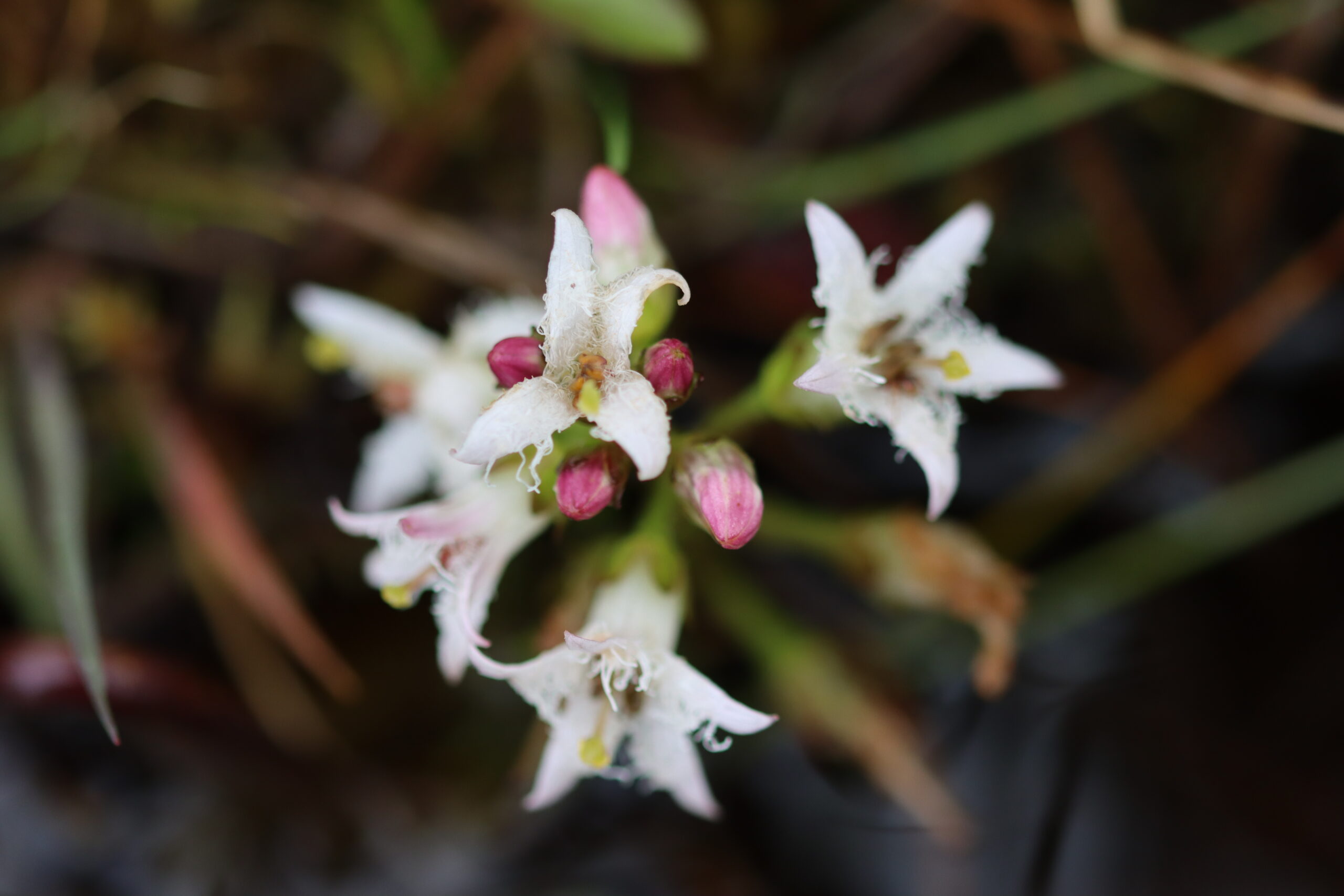
The white star-shaped ragged fringed flowers of the bogbean have a rank smell that attracts flies and beetles.
Although widely studied, research continues into many different aspects of Irish bogs. Unlocking Nature’s Pharmacy6 is one such project focusing on identifying potential therapeutic and commercial uses for Irish native bog plants. There are several traditional cures associated with these plants such as the treatment of stomach pain or toothache with Tormentil (Potentilla erecta), Sundew (Drosera sp.) used for bronchial complaint or warts, a tonic from Bogbean (Menyanthes trifoliata) for aching joints, coughs, loss of appetite or upset stomach. Heathers have been used to treat urinary and diuretic conditions, as well as rheumatism and arthritis. Researchers from this project visited farmers in Co. Mayo and spoke about the potential significance of the plants on their land for medicine. Farmers were astounded to learn of these properties, and this knowledge increases the sense of pride and custodianship they have in their lands. Discovery and the sustainable production of such medicines could have significant socio-economic benefits to the rural community living in and alongside our blanket bogs.
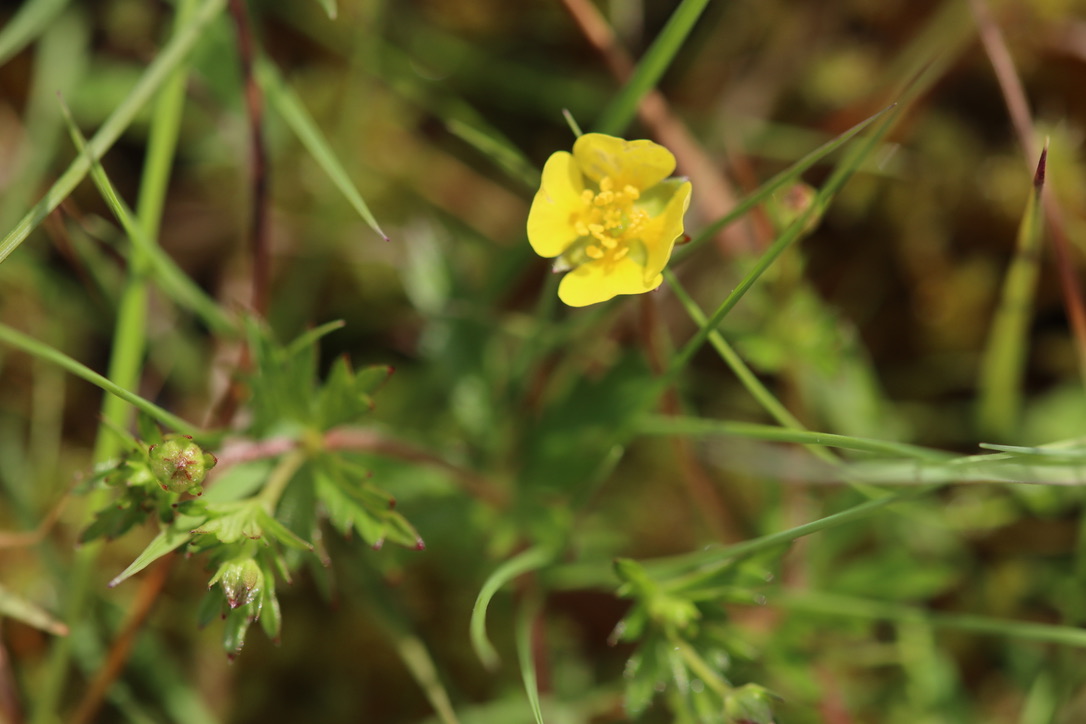
When cut, the yellowish-white roots of this plant turn deep red in colour, emitting an herbal, rose-like fragrance.
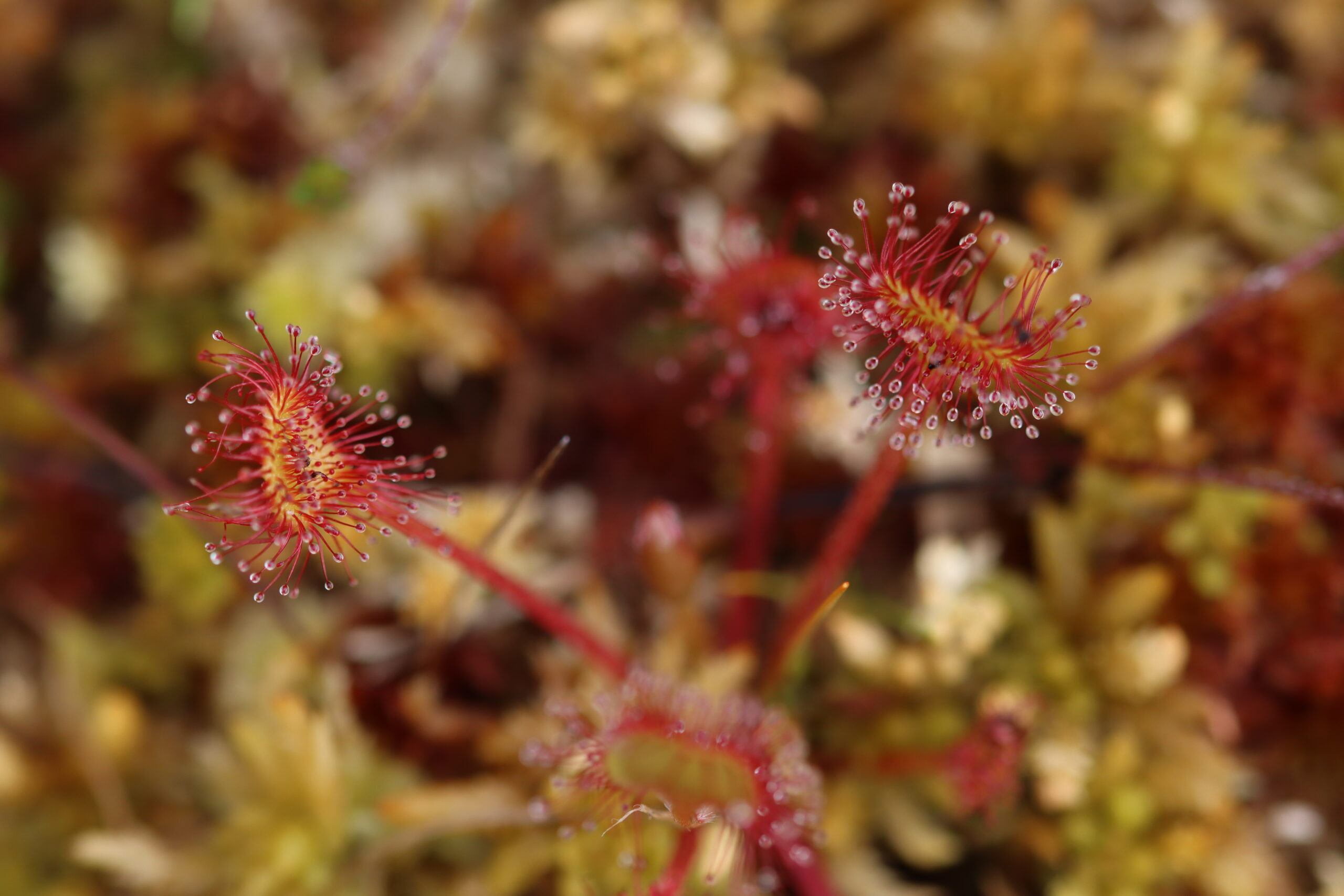
The tiny leaves of this plant present dew-like droplets, which glisten in the sun, luring small insects. These secretions look and smell like nectar.
Addressing the threats
Despite their importance, blanket bogs have been rapidly degraded over time, due to human activity and more recently compounded by climate change. When bogs are drained, cut, or burned, they lose their ability to store carbon, regulate water, and support biodiversity. Wild Atlantic Nature through various initiatives is addressing some of these threats.
Turf cutting, while providing an important source of fuel for heating, it can also lead to erosion and significant carbon emissions. Aiming to demonstrate a reduction in the demand for turf, the project is working with landowners on a home retrofitting pilot, with simultaneous restoration of turbary plots.
Draining bogs for agriculture and forestry disrupts hydrology, halting peat formation and accelerating carbon loss. Poor livestock management can affect the vegetation cover on the bogs surface, causing erosion and can result in nutrient enrichment. Changes in policy that removed all payments on a headage basis has helped address some of these issues. Many farmers are also now participating in results-based payment schemes, where they receive financial incentives for restoring and maintaining high-quality peatland habitats. In 2021 and 2022, Wild Atlantic Nature piloted an award winning scheme demonstrating this approach working with 823 famers in eight Special Areas of Conservation7 (SACs) in Ireland’s northwest.
Past afforestation policies led to large-scale conifer planting on bogs, requiring extensive drainage of the landscape. While it provided much needed employment in disadvantaged rural communities at the time, this damaging activity8 disrupted bog hydrology, dried out the peat, damaged soil structure, and resulted in biodiversity loss. Concerted efforts to remove conifers from deep peats is now being undertaken. This complex issue involves removing trees and drainage infrastructure in an effort to restore the hydrology. Wild Atlantic Nature in partnership with Coillte9 will be undertaking a number of forest to bog projects.
Invasive non-native species pose a growing threat to blanket bogs. Plants like Rhododendron ponticum, an evergreen shrub that thrives in acidic peat soils, has spread extensively throughout blanket bogs SACs altering plant communities and leading to degradation of bog habitats. As a way of dealing with this issue, an initiative known as Natura Communities10 has been developed. The initiative aims to build capacity in communities to enable the delivery of locally-led nature conservation and ecosystem restoration, which includes invasive species control. This work, while providing opportunities for local employment, is helping meet the SAC site specific conservation objectives (SSCOs).
The future
Protecting bogs is essential for conserving biodiversity, mitigating climate breakdown, and sustaining rural communities. Through conservation initiatives, habitat restoration, and increased awareness, efforts to safeguard these vital ecosystems are gaining momentum. By valuing and protecting bogs, we ensure that their ecological, cultural, and economic benefits remain for generations to come.
About Wild Atlantic Nature
LIFE IP Wild Atlantic Nature, is an EU funded project, which is co-ordinated by Ireland’s National Parks and Wildlife Service.11 The project works with farmers, local communities and other
Dr Margaret Flaherty | Community Engagement Officer
Margaret, Community Engagement Officer with Wild Atlantic Nature, is from Connemara and holds a PhD in Zoology and degrees in Nature Conservation and Ecology. With a background in education and visitor services in Ireland’s National Parks, she’s passionate about Irish natural heritage and biodiversity, community engagement, and dark sky conservation.
Dr Gary Goggins | Public Awareness Manager
Gary is Public Awareness Manager, focusing on communication and stakeholder engagement. He has worked in academia, construction, and the NGO sector in Ireland and Zambia. He holds a PhD in Environmental Social Science, with research interests in sustainable development, just transitions, and knowledge exchange.
References
1. https://www.wildatlanticnature.ie/
2. https://www.tcd.ie/education/research/research-projects/levers/
3. https://heritageireland.ie/places-to-visit/ceide-fields-neolithic-site-visitor-centre/
4. https://www.npws.ie/protected-sites/sac/000534
5. https://www.nationalparks.ie/wild-nephin/
6. https://www.tcd.ie/research/start/natpro.ph
7.
8.
10. https://www.naturacommunities.ie/
Plantings
Issue 47 – May 2025
Also in this issue:
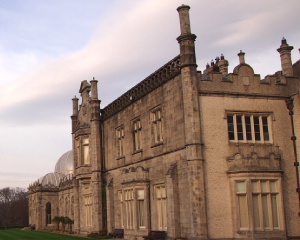
Haunted Histories in the Garden: A Sonic Journey Through Killruddery
By Joseph Young
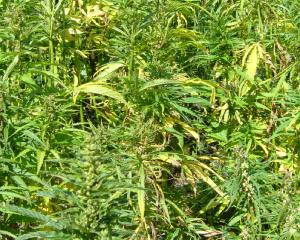
Building with Hemp: A Circular Path to Ireland’s Climate Resilience and Beyond
By Walter Brennan
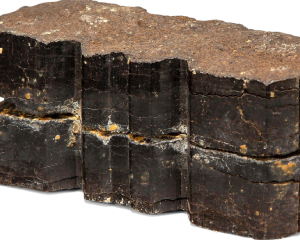
Joseph Beuys and the Bogs of Ireland
By Gayil Nalls
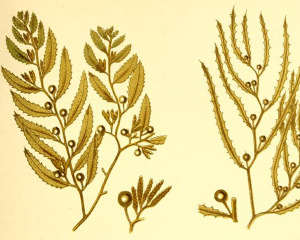
The Women Who Found Liberation in Seaweed
By Cara Giamo

Scent and Synapse: Aromatic Flora and the Mechanisms and Power of Memory Recall
By Gayil Nalls
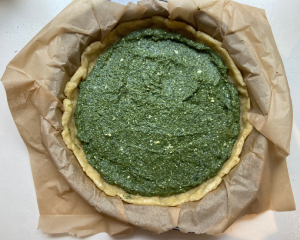
Eat More Plants Recipes:
Savory Spinach Pie
By Caterina Gandolfi
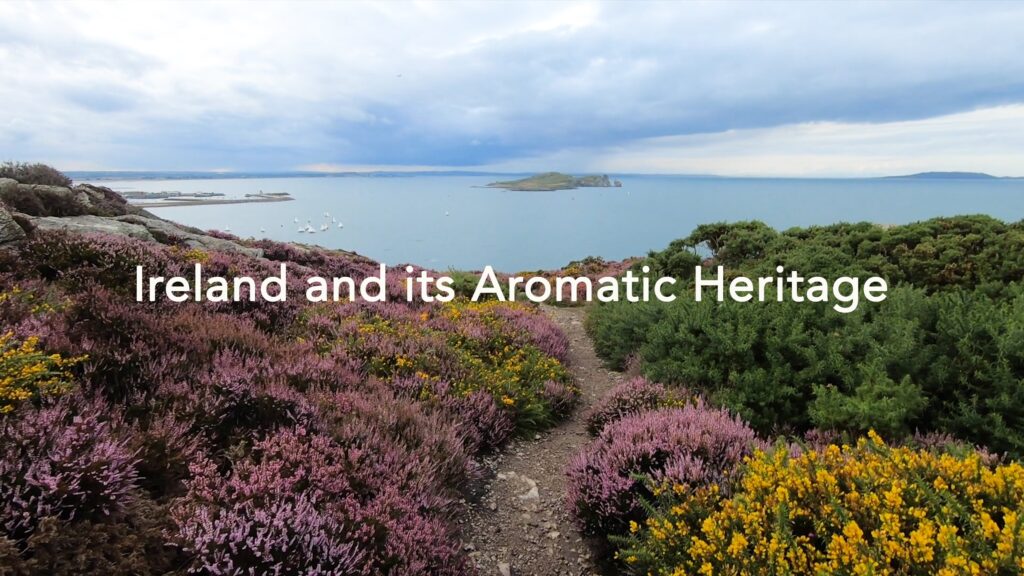
As Ireland transitions from the rich, smoky scent of peat-burning to a more sustainable future, its olfactory heritage is evolving. What will become the next iconic aromatic symbol of Ireland?
Click to watch the documentary trailer.

